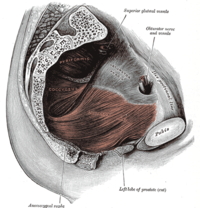
Reply to Letter to the Editor “Predicting Recovery and Outcome after Pediatric Stroke: Results from the International Pediatric Stroke Study”
Sign Up to like & getrecommendations! Published in 2020 at "Annals of Neurology"
DOI: 10.1002/ana.25767
Abstract: diction such as underlying etiology. However, we would like to emphasize that the stroke severity on admission and the treatment regimen may similarly have major influence on outcome after childhood stroke. Recently, the Save ChildS… read more here.
Keywords: pediatric stroke; iqr months; outcome; reply letter ... See more keywords

Reply to the Letter “COVID‐19‐Associated Encephalopathy and Cytokine‐Mediated Neuroinflammation”
Sign Up to like & getrecommendations! Published in 2020 at "Annals of Neurology"
DOI: 10.1002/ana.25856
Abstract: Muccioli et al proposed an interesting comparison between the case of encephalitis related to severe acute respiratory syndromecoronavirus 2 (SARS-CoV-2) infection we described and immune effector cell-associated neurotoxicity syndrome (ICANS). Indeed, the clinical phenotype characterized… read more here.
Keywords: cytokine; reply letter; neuroinflammation; covid ... See more keywords

Authors’ reply to the letter to the editor by Sabour
Sign Up to like & getrecommendations! Published in 2019 at "European Journal of Pain"
DOI: 10.1002/ejp.1345
Abstract: We appreciate the response to our article (Foxen-Craft et al., 2018) by Pordanjani, Iranpour, & Sabour for opening the discussion about use of statistical techniques in psychometric validation. Overall, the authors' critiques regarding the limits of… read more here.
Keywords: letter editor; authors reply; reply letter; editor sabour ... See more keywords

Reply to Letter to the Editor (HEP-19-1638).
Sign Up to like & getrecommendations! Published in 2019 at "Hepatology"
DOI: 10.1002/hep.30999
Abstract: Osteodystrophy is a worrisome complication in chronic liver diseases (CLD), especially in autoimmune liver diseases such as primary biliary cholangitis and autoimmune hepatitis accompanying vitamin D malabsorption and use of corticosteroid. As physical activity is… read more here.
Keywords: editor hep; reply letter; hep 1638; letter editor ... See more keywords

Reply to letter to the editor: Comment on "a bile duct-on-a-chip with organ-level functions".
Sign Up to like & getrecommendations! Published in 2020 at "Hepatology"
DOI: 10.1002/hep.31471
Abstract: We appreciate the interest of Xiao et al. in our work. We believe, however, that these authors have misinterpreted our experimental design and findings. They question our conclusion that the basal surface of cholangiocyte monolayers… read more here.
Keywords: comment bile; reply letter; bile duct; editor comment ... See more keywords

Reply to letter to the editor: “clinical evaluation of ureteral pseudodiverticulosis”
Sign Up to like & getrecommendations! Published in 2019 at "Abdominal Radiology"
DOI: 10.1007/s00261-019-02040-0
Abstract: We thank Dr. Yorita for his interest in our article investigating the association between ureteral pseudodiverticulosis and urothelial cell carcinoma [1]. As to the question of accumulation of cases in the study, it was a… read more here.
Keywords: ureteral pseudodiverticulosis; editor clinical; reply letter; clinical evaluation ... See more keywords

Reply, Letter to the Editor
Sign Up to like & getrecommendations! Published in 2017 at "World Journal of Surgery"
DOI: 10.1007/s00268-017-4349-0
Abstract: We are grateful to Drs Ariffin and Ngadiron for the interest in our paper. It should be clarified that this analysis was performed prior to the introduction of a trauma system in Scotland and that… read more here.
Keywords: trauma; reply letter; letter editor;

Reply to the letter: N-Butyl Cyanoacrylate–Lipiodol Mixture for Endovascular Purpose: Polymerization Kinetics Differences Between In Vitro and In Vivo Experiments
Sign Up to like & getrecommendations! Published in 2020 at "CardioVascular and Interventional Radiology"
DOI: 10.1007/s00270-020-02599-y
Abstract: We thank you for the opportunity to reply to the letter ‘NButyl Cyanoacrylate–Lipiodol Mixture For Endovascular Purpose: Polymerization Kinetics Differences Between In Vitro and In Vivo Experiments’ [1], and we are respectful to their valuable… read more here.
Keywords: polymerization; reply letter; blood; mixture ... See more keywords

Reply to the letter to the editor concerning: ‘Relationship between increased carotid artery stiffness and idiopathic subjective tinnitus’
Sign Up to like & getrecommendations! Published in 2017 at "European Archives of Oto-Rhino-Laryngology"
DOI: 10.1007/s00405-017-4500-4
Abstract: from the analysis. When we perform a correlation analysis (Spearman or Kendall tau) between the relevant variables, the coefficient of r is lower than 0.7 for all variables. According to these results, there is no… read more here.
Keywords: relationship increased; reply letter; editor concerning; tinnitus ... See more keywords

Reply to the Letter to the Editor of Y. Zhao, et al. concerning “Association between IGF1 gene single nucleotide polymorphism (rs5742612) and adolescent idiopathic scoliosis: a meta-analysis” by Ming Guan, Huan Wang et al. Eur Spine J (2016). doi:10.1007/s00586-016-4742-7
Sign Up to like & getrecommendations! Published in 2017 at "European Spine Journal"
DOI: 10.1007/s00586-017-5007-9
Abstract: 1. Definitely, the meta-analysis was based on the Preferred Reporting Items for Systematic Review and Meta-Analyses (PRISMA) criteria. And we admit that the flow diagram and the mentioned textbox in the flow diagram were not… read more here.
Keywords: meta analysis; analysis; reply letter; association ... See more keywords

Reply to the Letter to the Editor of Jin Yang et al. concerning “Correlations between sedimentation sign, dural sac cross-sectional area, and clinical symptoms of degenerative lumbar spinal stenosis” by Sangbong Ko (Eur Spine J [2018] 27: 1623–1628)
Sign Up to like & getrecommendations! Published in 2019 at "European Spine Journal"
DOI: 10.1007/s00586-019-06014-0
Abstract: Conclusions: Increasing severity of SedSign indicates pro‐ gressively smaller dural sac CSA, but there is an inconsistent association with clinical symptoms. Therefore, it is reason‐ able to suggest that spinal stenosis is severe in patients… read more here.
Keywords: clinical symptoms; spinal stenosis; reply letter; dural sac ... See more keywords